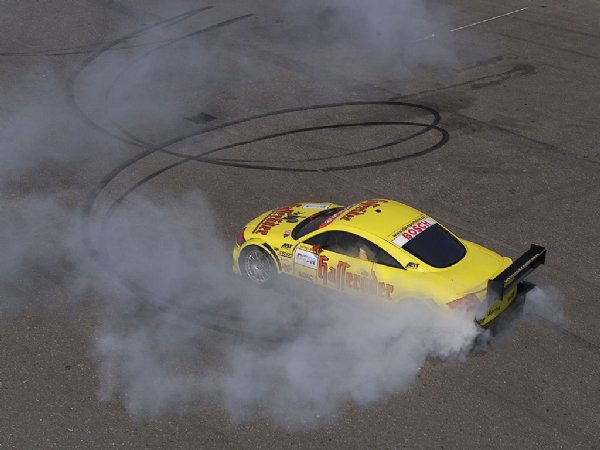|
A racing car that veers off track at high speed needs to hit a barrier that can absorb some of the force of the crash -- and for that, a concrete barrier won't do. At 90 miles per hour, a head-on collision with a concrete barrier transmits such force to the body that no driver could survive it.
To address this risk, NASCAR turned to scientists at Batelle, a research and development company in Columbus, Ohio. The company developed a super-elastic material called FlexAll. When a car collides at high speeds with a FlexAll barrier, the material is compressed and absorbs 92% of the force. It then slowly returns to its original shape, which prevents the car from ricocheting back out into traffic.
This newly developed material can be of benefit not just for racers but for ordinary drivers too. Batelle is currently developing FlexAll barriers that could be used on highways, to absorb the shock of collisions with larger vehicles traveling at speeds up to 60 miles per hour.
Today, it often seems that human destiny is on a collision course with reality. We live our lives on a 90 miles per hour fast track. The pace of development and progress is breathtaking; the rate of technological innovations transforming our lives is more rapid than we can assimilate. It often seems that our lifestyle is changing so rapidly and dramatically that we don't have time to stop and think, where are we heading? Do we like the direction we're going in?
What can we rely on, to absorb the impact of the inevitable collision? Not concrete, which is too hard and inflexible a substance. No, we need something that is strong yet flexible; something we can rely on when life flies out of control; that won't send us careening off in the wrong direction.
And indeed, the antidote already exists. "G-d creates the remedy before the disease," say our sages. Three hundred years ago, with the advent of the industrial revolution, which laid the groundwork for the technological explosion that followed, G-d also opened the “windows of heaven,” to introduce a powerful new set of spiritual teachings.
Rabbi Israel Baal Shem Tov and Rabbi Schneur Zalmen of Liadi introduced, respectively, the teachings of Chassidism and the teachings of Chabad. Chassidism teaches us how to get in touch with the mystical side of our nature and of reality. Chabad teaches us how to do so within the vessels of intellect and rationality. How to live a life of serenity and inner peace, yet still grounded in reality.
These teachings were introduced relatively recently because they are a final stage before the revelation of Moshiach. Then we will see clearly how the changes in the world are a prelude to an era of absolute peace and tranquility, the era of Redemption.
Prof. Yirmiyahu Branover is chairman of the Center of Magnetohydrodynamic Studies and Training at Ben-Gurion University.
|

